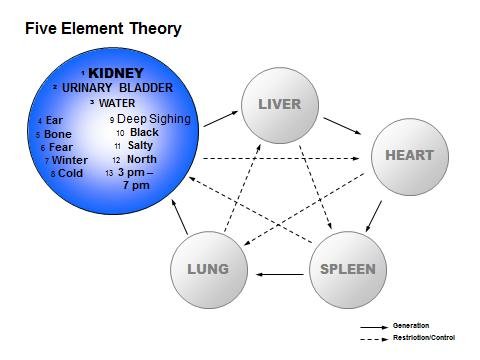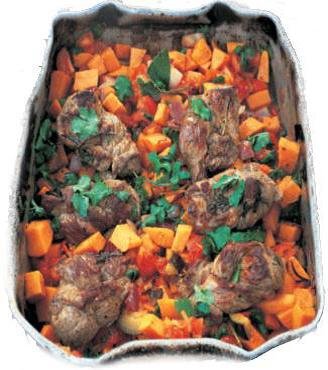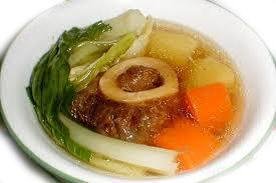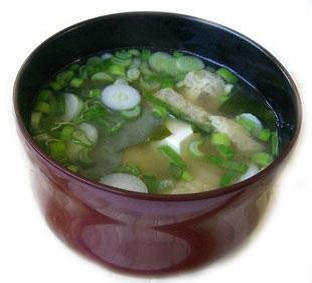Seasonal Harmony
by Ellasara Kling
“The natural healing force within each one of us is the greatest force in getting well. Our food should be our medicine. Our medicine should be our food.” Hippocrates: Greek physician (circa — 460 BCE – 377 BCE)
Last month this article discussed the importance of eating with attention to the season and Five Element Theory. Since how we eat is often as important as what we eat, I thought that this month we would discuss some basic eating guidelines.
Traditional Chinese medicine recommends that we make breakfast the most nutritious meal of the day. Lunch is the meal with quantity. It is recommended that dinner is light and that we do not eat dinner after 7-8 p.m. This way, our bodies are not digesting a heavy meal while we are sleeping. This is backwards to the common western lifestyle which is often eating an “empty” sweet or overly processed grain or bread for breakfast; a quick, small lunch often at our desk or while rushing around (nomadic eating); and then a large meal at the end of the day when our bodies are tired. This order of eating doesn’t even sound very appealing. An eating plan more in line with TCM principles might be: breakfast could be a congee with nuts or vegetables or eggs and vegetables. Lunch could be a variety of vegetables, grains, some fruit or a hearty soup or stew. A light dinner might include some lightly cooked vegetables or a light soup such as miso broth with vegetables.
 “It looks delicious.” It smells wonderful.” Before we eat something, we see it and smell it. These two senses are important to our appreciation of our food and inform us of what to expect. When food is appealing to the eyes and the sense of smell, our bodies are already beginning the digestive process. Then, when we have our first taste, we want a good flavor. If the food looks good and smells inviting, we certainly expect it to also taste this way. Therefore, our food should have good appearance, good aroma and good flavor. A relaxed atmosphere and good company whenever possible is also a good idea and precludes listening to or watching the nightly news or an overly exciting TV show or movie. Mostly, appreciate the food you are eating and yourself. Take your time and eat slowly. No meal is too humble to be appreciated. In fact, simplicity is often better than too much complexity.
“It looks delicious.” It smells wonderful.” Before we eat something, we see it and smell it. These two senses are important to our appreciation of our food and inform us of what to expect. When food is appealing to the eyes and the sense of smell, our bodies are already beginning the digestive process. Then, when we have our first taste, we want a good flavor. If the food looks good and smells inviting, we certainly expect it to also taste this way. Therefore, our food should have good appearance, good aroma and good flavor. A relaxed atmosphere and good company whenever possible is also a good idea and precludes listening to or watching the nightly news or an overly exciting TV show or movie. Mostly, appreciate the food you are eating and yourself. Take your time and eat slowly. No meal is too humble to be appreciated. In fact, simplicity is often better than too much complexity.
It is important to eat fresh foods as they have the most available Qi. An easy way to do this is to eat foods that are truly natural to the season and locality where you are. They travel less and are picked when ripe rather than being forced to ripen away from their natural growing environment. Additionally, the more food is processed, the more of its innate energy value is lost. Nonetheless, eating raw foods is not a solution. Raw foods are hard on the digestive process and are too “cold”. The stomach values warm foods that have been fully chewed most of all. The stomach in TCM is viewed as a cauldron that “cooks” the foods and beverages we give it. Therefore, our foods should be cooked even if they are just lightly steamed.
Just as you would not over fill a cauldron, do not over fill your stomach at any time. Eat until you are 70-80% full. How do you know what that is? Fair question and here is a suggestion. Instead of eating until you feel full, eat until you are no longer hungry. This is often clearer to most people when eating at home, as I am often asked how to do this at a restaurant. When out to eat, order less dishes or smaller dishes. After all, the kitchen will make more food for you should you want it.
Our bodies like regularity when it comes to meal times. Do your best to have your meals at regular intervals on a consistent basis. Try to have all five basic tastes: salty, bitter, sweet, pungent, and sour throughout the day; if not at each meal. Oft times recipes will contain a variety of flavors within them (see below).
Most chefs will tell you that the love a person has while cooking is part of the “taste” of the food. A carefully prepared dish, an apple cut with positive intention, tea that is given its few minutes to steep properly will add much to your enjoyment and health.
I hope the above ideas resonate with you and that you find ways to integrate these ideas into your life.
Mostly, I feel it is important to listen to your body, understand what it is telling you, use your self-awareness and always follow your intuition.
Some Foods That Are Particularly Good For the Winter Season:
Black Beans, Black Mushrooms, Blackberry, Black sesame seeds and oil, Black soybeans, Blueberry, Bone marrow, Cabbages, Celery, Chard, Cranberry, Ginger, Job’s tears, Kale, Kidney beans, Kohlrabi, Longan, Lotus seed, Miso, Mulberry, Mutton, Ocean Perch, Parsley, Pine nuts, Prunes, Raspberry, Rutabaga, Seaweed, Shrimp/Prawns, Soy Sauce, String beans, Turnips, Walnuts, Wood ear mushrooms.
Health Topic: And now a few words about the upcoming Holiday Season. For many people the year ends with parties, get-togethers with family and friends, and an abundance of rich foods and drinks. How wonderful! Along with the feasting and enjoyment of being with others there is often an emphasis on rushing about and trying to cram 30 hours into 24. All of this occurs in Winter whose hallmark is rest and restoration. Winter is a time to be quieter, go to bed earlier, be calmer, more introspective and allow ourselves to rest. It is important in the Winter season to honor this quieter more inward movement so that we are ready for the burst of energy that Spring asks of us. Find time in this season to rest deeply and fully. Eat, drink and live moderately so as not to over tax your energy systems. Follow your own innate wisdom and guidance on what truly works for you. Have a wonderful and healthy holiday season over the next six weeks or so.
RECIPES
 Wood Ear Mushrooms with Tomato
Wood Ear Mushrooms with Tomato
Ingredients:
¼ cup dried wood ear mushroom (soak in hot water for a few minutes and when re-hydrated, slice into ¼” ribbons)
1 medium tomato cut in 8 wedges
¼ cup grapeseed oil
mince:1/2 clove garlic, 3 green onions- whites only, 1inch piece of ginger,
4-5 dried small red hot peppers
salt to taste
1 TB sugar
1 tsp. black vinegar (balsamic vinegar may be used – optional)
Directions:
Heat a large heavy skillet or wok, add and heat the oil, then add the mushrooms. After a few minutes add the garlic, green onion, ginger, hot peppers, sugar, and salt individually tossing them in with each addition. Then add the tomatoes and cook until they have begun to sweat. Remove from the heat and serve. The vinegar may be sprinkled over the dish right before serving. It adds just a touch of “zing”.
Wood ear mushrooms are one of the foods that harmonize with Winter/Kidney season and Tomatoes are a Summer/Heart fruit that also nourishes the Liver and Spleen meridians with its sweet and tart flavor.
 Moroccan Stew
Moroccan Stew
Ingredients:
2 tablespoons oil
1 tsp ground turmeric
1 1/2 teaspoons ground black pepper
1 teaspoon ground cinnamon
2 TB diced fresh ginger
1/4 teaspoon ground cayenne pepper
1 pound 1” cubed lamb*
1 cup chopped celery
2 cups carrots, diced
1 red onion, chopped
1 (29 ounce) can diced tomatoes
8 cups water
¼ cup finely minced fresh cilantro
1 cup lentils
1 (15 ounce) can black beans, drained and rinsed
¼ tsp salt
1 lemon, juiced
1 tsp finely minced mint
Directions:
Place the oil, in a large soup pot that has been heated on low. Add the turmeric, black pepper, cinnamon, ginger and cayenne pepper. Stir into the oil and heat for 2 minutes. Add the lamb and toss frequently till lamb is covered in the spices and lightly browned on all sides. Add tomatoes (reserve the liquid from the can), Stir and simmer for 15 minutes. Add the tomato water and 8 cups cold water and stir in. Add the celery, carrots, onion and cilantro – stir. Add the lentils. Bring to a boil, then reduce the heat to simmer, cover — about 2 hours check liquid occasionally – do not let “dry out”. Add the thoroughly drained and rinsed black beans and simmer another 5-10 minutes so that they are heated through. Mix salt into lemon juice and stir into stew at very end. Garnish w/ finely minced mint on each bowl.
*This hearty, dish can also be prepared without the meat. Because of the blend of spices with root vegetables and legumes, it is just as flavorful, and warming.
Basic Bone Marrow Soup
Part 1:
1 lb marrow bones
3 quarts water
2 inch piece of fresh ginger root, sliced
6 scallion whites
1 bay leaf
Part 2:
3 diced carrots
2 diced stalks of celery (include the leaves if on the stalk)
2 quartered plum tomatos
3 cups chopped Kale leaves*
Salt and pepper to taste
¼ cup parsley, chopped
Directions:
Part 1:
Put all the Part 1 ingredients in the water and bring to a boil, reduce heat, cover and simmer for at least 3 hours
Let cool–Poke marrow out of bones and leave in the “bone water” and discard everything except water. You should now have about 6-8 cups of broth with marrow in it.
Part 2:
Add veggies, cover and simmer covered till veggies are done. add salt and pepper to taste.. .serve and sprinkle with parsley.
*Rinse and do not soak Kales leaves. Cut your Kale leaves first allowing them to rest and breathe for at least 5 minutes. This will enhance the flavor.
Bone marrow soup is considered to be a strengthening soup that is good for prevention and also if someone has been ill. According to Five Element Theory, Bone Marrow Soup is an excellent support for the Kidney Function.
Carrot, Ginger and Sweet Potato Soup
5 quarts water
3 inch piece of chopped fresh ginger
6 medium carrots – cut into 2” pieces
2 medium sweet potatoes – cubed
1 large sweet apple – peeled, cored and chopped or sliced
2 TB dried tangerine rind
Salt/pepper
Directions:
Place all the ingredients in a large soup pot and bring to a boil. Reduce heat and simmer for about 2 hours covered. Remove from heat, let cool. In small batches puree through your blender or food processor until smooth. If too thick, just add a little water. Adjust salt and pepper to taste. This is a bright, naturally sweet soup that is filling, warming and kind to your stomach.
DIY Five Minute Soup
This handy soup is quick and easy to make, can use leftover vegetables, a little crumbled seaweed, or what pleases you. It makes a good soup for any time of day. Easy to take to work for lunch by putting all the ingredients together in a cup, excepting, of course, the boiling water which you add at work.
Miso
Boiling water
Cooked vegetables
Rice
Scallions
Seaweed
Directions:
2 TB miso (or to taste) to each cup boiling water
Add cooked vegetables, rice, scallions, seaweed, or your own assortment of what pleases you.
Winter Snack
A tasty easy to do and easy to have an on-hand snack that is especially in tune with the winter season is to toast/roast nuts and seeds. Placing a layer of walnuts, for example, on a baking dish in a heated oven (325°F) for about 5-7 minutes. Black sesame seeds can be toasted in a pan on top of the stove in just a few minutes. These nuts and seeds can be a snack or something that you sprinkle on your soups, congees, side dishes, main dish or desserts.
Seasonal Tea
Where I live, this past weekend heralded the coming end of Fall and start of Winter with an unexpected “Nor’easter” storm leaving 6-15 inches of snow on the ground and was a severe event for trees that hadn’t even lost their leaves. This event highlighted the need to be ready for the unexpected by looking towards that which is preventive. In that spirit, I offer the easiest of cold prevention teas, accessible to virtually everyone.
Basic Ginger Tea
1 inch piece fresh ginger – sliced or chopped
4-5 scallions – whites only
Rind of one dried tangerine
4 cups of water
Rock or brown sugar or honey to taste
Add all the ingredients together and bring to a boil. Reduce heat and simmer for no more than 5 minutes as it will get bitter. Remove the foods. Drink hot. Drink some every day. Enjoy the warming feeling and knowledge that you are supporting your day-to-day good health!
Wishing you good health! Remember to smile at all things.
 [Following the threads of her personal tapestry, Ellasara, a long-time student of Master Nan Lu, weaves her life around the exploration and sharing of self-healing through a variety of modalities, primarily focusing on food, common herbal plants, Qigong Meridian Therapy and Qigong for Women’s Health. For comments, questions, consultations, ellasara00@gmail.com]
[Following the threads of her personal tapestry, Ellasara, a long-time student of Master Nan Lu, weaves her life around the exploration and sharing of self-healing through a variety of modalities, primarily focusing on food, common herbal plants, Qigong Meridian Therapy and Qigong for Women’s Health. For comments, questions, consultations, ellasara00@gmail.com]




